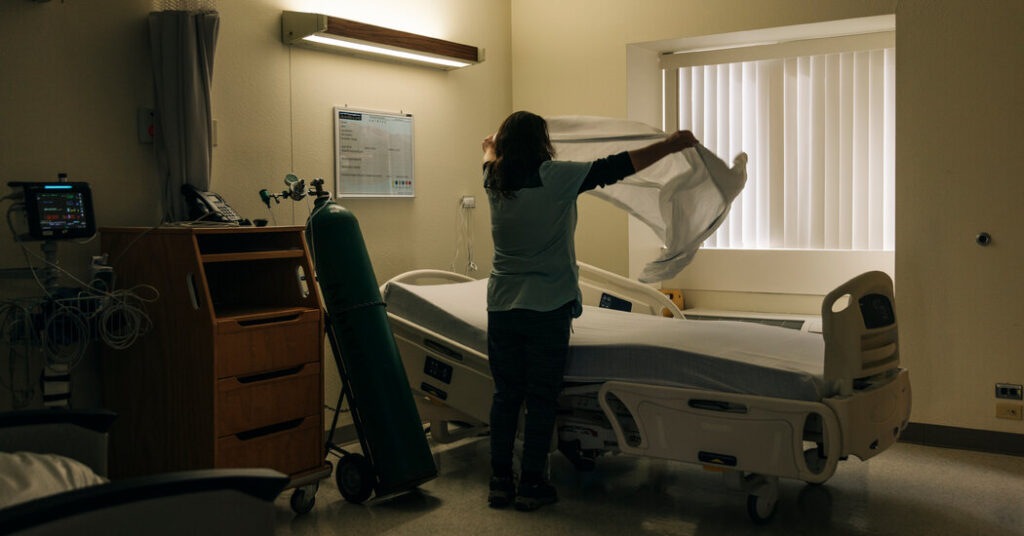
Even intensive-care patients who belong in special units are dependent on Cascade. One recent diabetic ketoacidosis patient was kept alive at Cascade because the Life Flight helicopter from Boise couldn’t navigate through thick fog. Another patient, who was having a heart attack, was denied a transfer to St. Luke’s in Boise because Cascade is not part of the hospital’s system, but doctors treated her successfully at Cascade.
During Covid surges, Dr. Katie Camarata, the physician who cared for Ms. Wenrich, stayed up overnight with critically ill patients, calling hospital systems in surrounding states. All seven refused the transfers. Eventually, the Cascade staff created their own negative-pressure rooms so it could keep highly infectious patients in-house without infecting others.
Providing inpatient care “comes down to a moral decision,” said Dan Rosbrugh, 75, who was admitted to Cascade in October with pancreatitis pain he called “worse than my broken leg in Vietnam.” He stayed for five days. When he could eat again, his doctor, Dr. Ron Ellsworth, drove to the D9 Grocery to buy him pudding.
Some hospitals have already made the decision to accept the government’s offer. St. Margaret’s Health in Illinois told community members that it would convert one of its two hospitals, which are less than four miles apart, into a rural emergency one but keep the other full service. Sturgis Hospital in Michigan was struggling to operate on a loan when it learned of the new designation and said it would convert.
Others plan to forgo it. Chief executives at Ouachita County Medical Center in Camden, Ark.; Southern Inyo Hospital in Lone Pine, Calif.; and Comanche County Hospital in Coldwater, Kan., said that ending inpatient services would be untenable for their elderly populations.
Tim Reeves, the chief executive of the 16-bed Bucktail Medical Center in Renovo, Pa., ruled out conversion because, in the case of another pandemic surge, there would be “nowhere to transfer my patients anymore.”
In 2021, Bucktail’s financial margin for patient services was negative 43 percent.
“Am I going to lose some revenue? Possibly,” he said. “But is it more important to provide the services needed? That’s the position we’re taking.”
You may also like
-
Documents reveal Biden's pressure campaign to censor Facebook, YouTube, Amazon
-
In a first, orangutan seen using herbs to treat wound
-
In a first, FDA approves use of Apple Watch for clinical trials involving abnormal heartbeats
-
Peloton to cut 400 employees, with even CEO on the way out
-
Florida's House Democrats make an appeal to the people as six-week abortion ban kicks in

